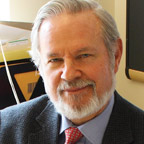A Green City for the Midwest

Not all the interesting ideas about the Midwest come from the Midwest. A consulting firm in suburban Boston has floated an idea for a "green city" to be built within an existing Midwestern city "that would offer a living, breathing opportunity to create an entire clean-tech infrastructure." They pick the Midwest because it's "an area of our country that's seriously in need of reinvention." Their idea is to build this "sustainable sub-city" within Detroit—not exactly a trailblazer in the move away from a fossil fuel economy.
The authors are Mark W. Johnson and Josh Suskewicz, of the Innosight consulting firm in Watertown, Massachusetts. The article, "Copenhagen: Why the US Should Build a Green City," appears on the Conversation Starter blog of the Harvard Business Review.
Their model, Masdar, in the UAE, is not yet a city, just a project being built in the desert outside the city of Abu Dhabi. Johnson and Suskewicz recognize that a greenfield project like this isn't feasible in the Midwest, which is not so much trying to create a new economy as to transition from an old economy. Instead, they want to revive a "declining industrial city."
Presumably, this project would be based on electric cars, public transport powered by alternative energies and on the clean/green technologies that all cities must adopt, sooner or later, if they are to survive in a post-carbon world.
As mentioned, Detroit doesn't jump to mind as the optimal site for this experiment. It is probably the world capital of fossil fuel economics, and local opposition to new technologies remains intense. In addition, Detroit's survival as a city is still in doubt. If this "green city" is built in Detroit and the city fails anyway, that would be the end of the experiment.
Where then? Chicago is the capital of the Midwest and, more important, has made the transition to a global-based economy that pretty much ensures its future. Despite its downtown glitter, it has vast areas that have never recovered from the collapse of the industrial economy: the Southeast side, near the old Wisconsin Steel and U.S. Steel mills comes to mind. Much of this brownfield area is polluted and would have to be cleaned up—but isn't that the point of this "green city" project?
Mayor Daley has been talking up the green economy for years. He even installed a garden roof on top of City Hall. But his real commitment to the green life is in doubt. The city has a poor record on recycling, hasn't done much with power plants, tolerates traffic congestion and has done nothing to modernize its antiquated public transit system. Most tellingly, Daley's chief environmental officer, Sadhu Johnston, has quit to become deputy mayor of Vancouver, British Columbia. Johnston, at 35 one of the most impressive young Chicago leaders, was Daley's idea man and point person in the city's progress so far. The Vancouver job sounds like a promotion, but his departure tarnishes Chicago's green credentials.
So Chicago might not be the best site for the Innosight project. Where then? Some Midwestern cities had less of an industrial legacy to overcome and are already launched into the 21st century. Minneapolis/St. Paul, Indianapolis, Columbus and Omaha come to mind. Other, older industrial cities are already asking the right questions and focusing on the future: any of them might embrace this project as a symbol of their rebirth. Akron, Peoria and Grand Rapids are candidates. So are smaller places like Janesville in Wisconsin or Wooster in Ohio. So are college towns like Madison. Cedar Rapids was doing well before the 2008 floods devastated it. It's still a long way from recovery. A "green city" rebuilding project, plus the federal funds it would draw, would be a big help.
All this, of course, presupposes that the Midwest offers more fertile soil for a "green city" than, say, a desert tract on the Persian Gulf. But the Johnson-Suskewicz idea is worth discussing. iBi
Reprinted with permission. Originally posted on December 14, 2009 on The Midwesterner blog at globalmidwest.typepad.com.

